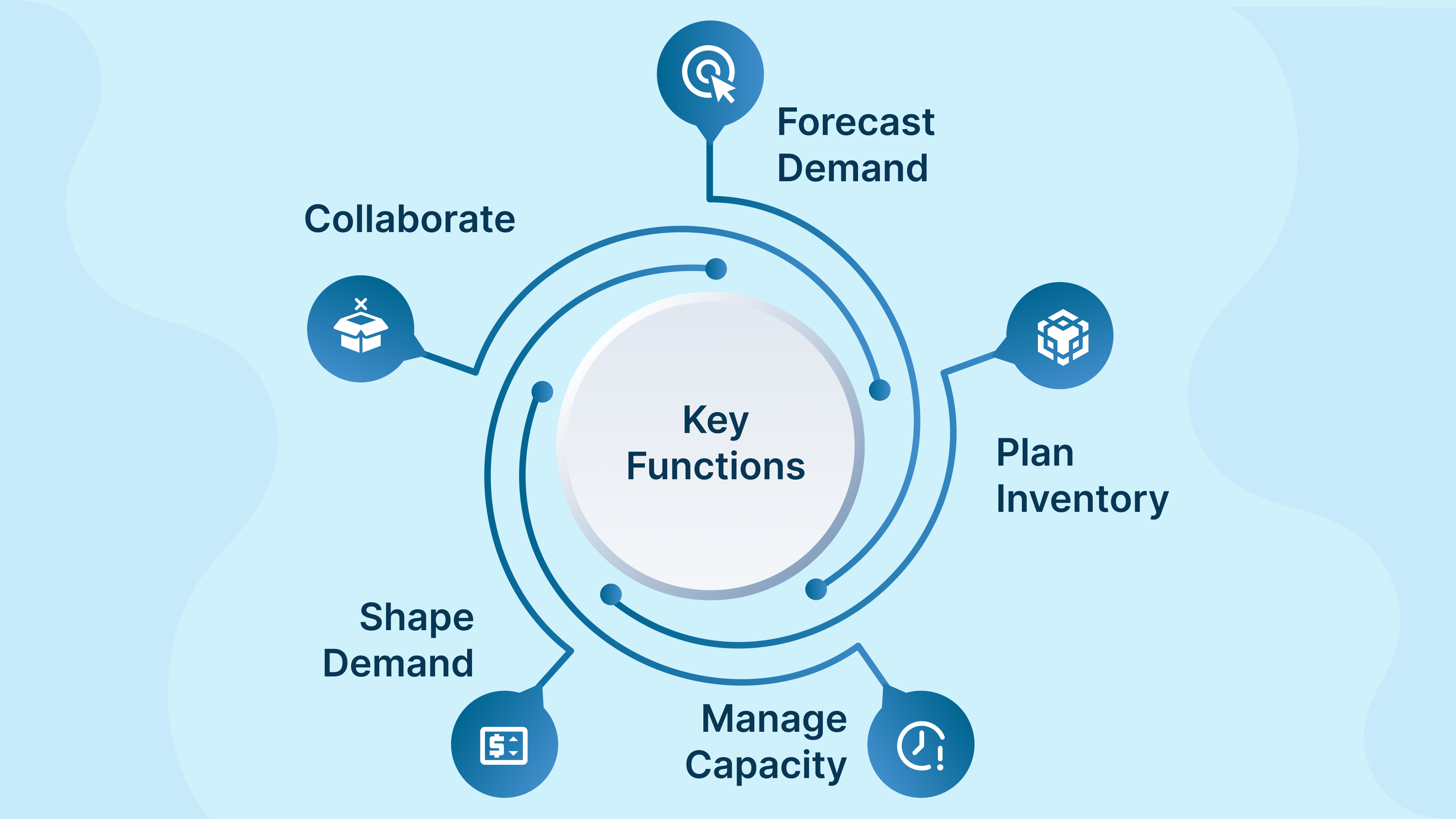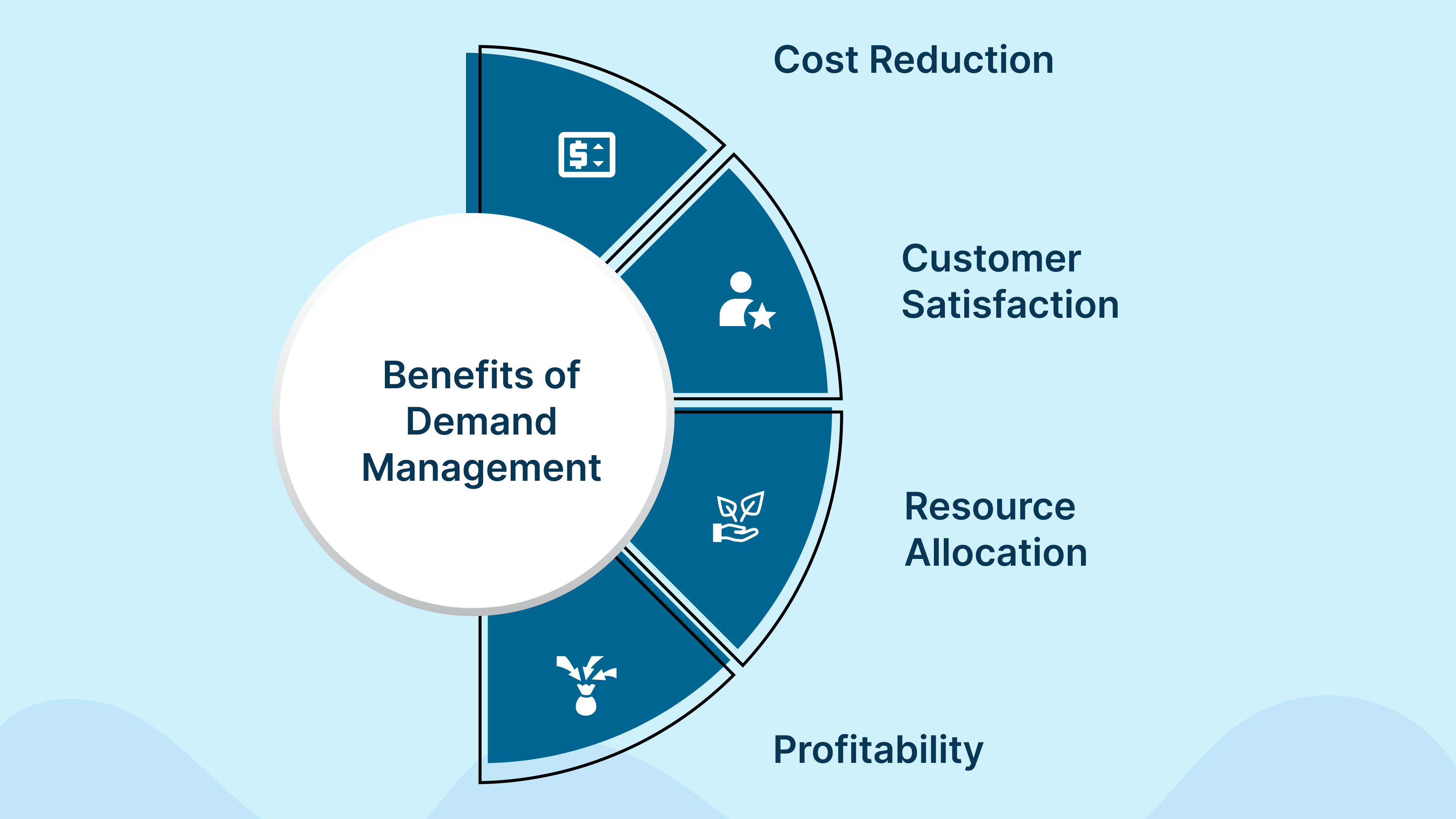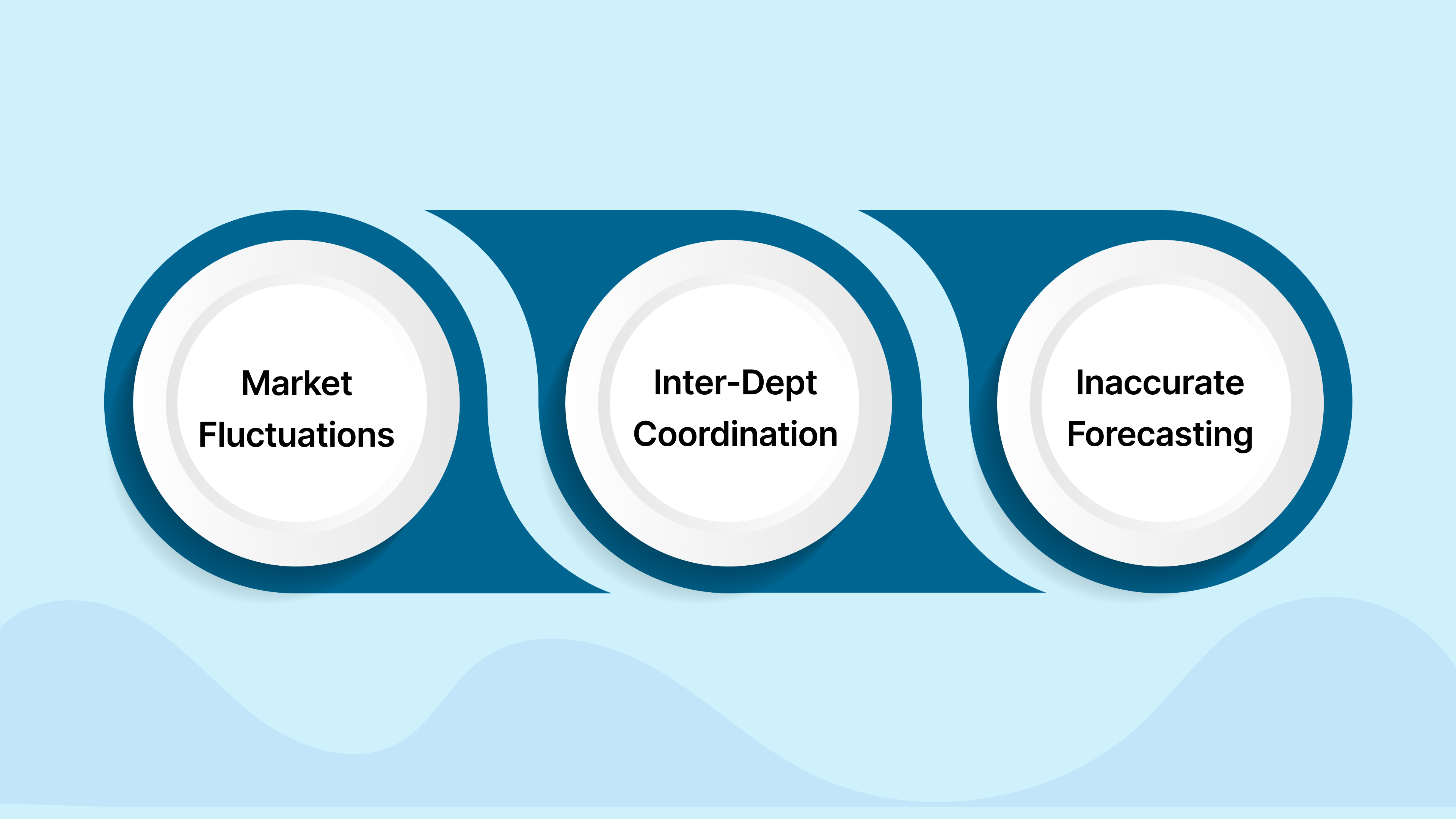With the Philippine economy projected to grow by 5.6% in 2025 and 6% in 2026, businesses face growing pressure to meet rising consumer demand. A strong labor market and low inflation continue to drive private consumption, pushing companies to optimize how they plan, produce, and deliver goods.
This makes demand management a strategic necessity for businesses aiming to stay competitive. It’s the process of forecasting, planning, and aligning resources to meet customer demand efficiently, without overstocking, underproducing, or losing sales. For businesses in the Philippines, mastering demand management helps reduce waste, improve customer satisfaction, and protect profit margins.
Demand management is a crucial business practice focusing on forecasting, planning, and meeting customer demand while optimizing resources. Demand management becomes even more essential for businesses in the Philippines, where economic growth and private consumption are rising. It involves understanding the market’s needs and ensuring that supply matches this demand efficiently, whether you’re managing inventory, production, or workforce capacity.
Demand management ensures that you’re not overstocking or understocking, both of which can be costly for entrepreneurs, SMEs, and established businesses in the Philippines. It helps your business avoid inventory shortages, reduce carrying costs, and ensure that products are available when and where your customers need them. Essentially, demand management involves balancing supply with demand while enhancing customer satisfaction and maximizing profits.
Let’s now focus on the core elements that make demand management successful. Let’s break down each of these key functions and explore their roles in driving efficiency and effectiveness within demand management.

Each function is vital in managing operations and maintaining a balance between supply and demand. Let’s take a closer look at some of the primary functions involved in demand management:
Forecasting demand involves predicting future customer demand based on historical data, market trends, and other factors that could influence purchasing behavior. For SMEs and online retailers, accurate demand forecasting enables informed decisions about inventory purchasing, production, and staffing levels.
During peak shopping seasons, such as the holiday rush, demand forecasting plays a key role in ensuring you have enough stock to meet the surge in orders. It also helps prevent overstocking products that may not sell after the season ends. For businesses in the Philippines, where economic growth is steady, having a robust forecasting system is crucial to stay ahead and maintain competitive pricing.
Inventory planning plays a crucial role in ensuring businesses maintain optimal stock levels. The goal is to have enough inventory to meet customer demand without overstocking, which can lead to high holding costs or stockouts that result in missed sales opportunities.
For Philippine e-commerce businesses, the right balance between supply and demand can make or break operations. Inventory planning involves closely monitoring sales data, seasonality, and lead times from suppliers to determine the right amount of stock to keep on hand. Efficient inventory management ensures your business can deliver products quickly and cost-effectively while maintaining healthy profit margins.
Capacity management focuses on aligning your production and resources to meet demand without overburdening the system. Whether it’s manufacturing products or managing warehouse space, capacity management ensures you can meet peak demand periods without incurring unnecessary costs or delays.
In the Philippines, where industries like retail and manufacturing are rapidly expanding, capacity management has become an essential function. For example, during holiday sales or product launches, production lines and fulfillment centers must be ready to handle the expected demand without compromising on quality or speed. Proper capacity management also prevents underutilization of resources, allowing businesses to smooth their operations.
Demand shaping is a proactive technique used to influence customer behavior in ways that better align demand with available supply. This can involve strategies such as pricing adjustments, promotional offers, or introducing new product variations that appeal to customers at different price points.
In the Philippine market, where consumer spending is on the rise, demand shaping can be particularly effective. By using promotions, loyalty programs, or bundling products together, businesses can encourage customers to buy more, or purchase certain products, helping to even out demand fluctuations and ensure optimal stock levels.
Collaboration among various departments within an organization is essential to ensuring that demand management runs smoothly. Sales, marketing, logistics, and finance teams must work closely together to align on goals and share information about demand trends, promotional activities, and production needs. This collaborative approach helps in making decisions that are not only based on data but also on current market realities.
In Philippines, where trends can change quickly, collaboration ensures that demand management processes are flexible and responsive. By aligning marketing efforts with sales goals and ensuring logistics are prepared for spikes in demand, businesses can create a unified approach to meeting customer expectations.
Now that we’ve explored the foundational aspects, it’s time to look at the practical steps that make demand management work effectively.
Discover how Fusion SaaS can enhance your demand management strategy.
Request a demo todayAlso Read: What is a Logistics Facility and How Does It Work?
Successfully managing demand requires a structured process that ensures each step from forecasting to fulfillment is aligned with the overall business objectives. Let’s break down the steps that help smooth demand management and ensure your business can meet customer needs efficiently and cost-effectively.
Demand forecasting uses predictive analytics to forecast future demand for services or products. By predicting future demand, businesses can plan ahead and ensure they have the right inventory available. Demand Forecasting relies on historical data, customer trends, and market shifts to make informed predictions.
For businesses in the Philippines, understanding local buying patterns, especially during peak shopping seasons like the “11.11″ sale, helps predict demand spikes. Additionally, using tools and software for forecasting can increase accuracy, making the entire process more data-driven.
After demand forecasting, the next step is managing inventory levels. It’s about aligning the amount of stock available with the forecasted demand while avoiding overstocking, which ties up capital and storage space, or stockouts, which can result in lost sales.
Inventory optimization helps businesses reduce storage costs, which is crucial in the Philippines, where real estate and warehousing costs can be high. Using just-in-time (JIT) inventory strategies or safety stock calculations ensures businesses can meet demand without incurring unnecessary overhead costs.
Supply chain coordination is essential for ensuring that production and suppliers can meet the demand outlined in the forecast. It involves collaborating with suppliers, manufacturers, and other key partners to ensure production and delivery schedules align with the demand forecast.
In the Philippines, where logistics challenges can arise due to infrastructure constraints, maintaining strong supplier relationships and clear communication channels is crucial for maintaining smooth operations.
Once the inventory is optimized and supply chains are coordinated, it’s time to focus on order fulfillment and logistics. Timely and accurate order processing, along with effective delivery management, are crucial to ensuring customer satisfaction.
In the Philippines, where the rise of e-commerce has heightened customer expectations, providing fast and reliable delivery options such as same-day delivery can set your business apart. Ensuring that orders are fulfilled according to demand forecasts helps businesses avoid bottlenecks and delays.
Finally, businesses need to monitor and evaluate their demand management processes continuously. By tracking key performance metrics such as order fulfillment rates, stock turnover, and customer satisfaction, businesses can adjust their processes as needed to improve efficiency.
For businesses in the Philippines, using analytics tools to track demand trends and performance data helps in making informed decisions about inventory, logistics, and production, ensuring that demand management remains effective over time.
Incorporating effective demand management into your business strategy brings a range of benefits that directly influence operational efficiency, customer satisfaction, and profitability.

Effective demand management is a strategic approach to improving your entire business process. The benefits are far-reaching and can drive long-term success. Here’s how effective demand management can transform your business:
One of the most immediate benefits of demand management is cost reduction. By minimizing excess inventory and managing stock levels, businesses can reduce warehousing costs and prevent overstocking, which ties up valuable capital.
This is particularly important in the Philippines, where storage costs can be significant, especially in metro areas like Metro Manila.
The International Monetary Fund (IMF) has also noted the role of supply factors in driving inflation, with supply-side constraints accounting for 62% of the average 3.8% inflation rate in the Philippines over the past 23 years. Efficient demand management directly impacts this by ensuring resources are allocated effectively and waste is minimized.
Meeting customer demand promptly is crucial in today’s competitive market. Effective demand management ensures that you have the right products available at the right time, enhancing customer satisfaction and loyalty. By preventing stockouts and delays, you show your customers that you value their time and commitment.
In the Philippines, where e-commerce growth has surged, customers expect quick deliveries, and businesses that can meet these expectations are likely to secure repeat business and foster long-term relationships with their customers.
Effective demand management helps manage resource allocation across production, labor, and materials. By accurately predicting demand, businesses can align their production schedules, material procurement, and labor needs more efficiently, reducing wastage and improving operational efficiency.
For businesses operating in the Philippines, particularly SMEs looking to scale, better resource allocation means maximizing the use of limited resources, lowering operational costs, and improving the overall efficiency of production processes.
Perhaps the most rewarding benefit of demand management is increased profitability. By striking the right balance between supply and demand, businesses can reduce waste, improve stock turnover, and ultimately maximize revenue. Proper demand management ensures that businesses aren’t overproducing or underproducing, leading to more efficient use of resources and better financial results.
Now that we have explored the core benefits, let’s look at real-world examples to see how demand management is applied in different sectors.
Understanding demand management is one thing, but seeing it in action clarifies how this strategy can transform your operations. Let’s explore some practical examples where demand management plays a crucial role in improving business performance:
For small and medium-sized enterprises (SMEs) in the Philippines, managing customer demand is critical in the fast-growing e-commerce sector. With online shopping surging, particularly in Metro Manila and other major cities, demand forecasting helps businesses predict peak times, stock the right products, and ensure that orders are fulfilled promptly. SMEs use demand management strategies to reduce stockouts, ensuring that popular products are always available while avoiding overstocking, which could lead to excess inventory costs.
Demand management is key to balancing production with actual market demand in the manufacturing industry. Companies use demand forecasting to adjust production schedules and avoid overproduction, which can result in wasted resources and unnecessary storage costs. By aligning production with forecasted demand, businesses smooth their manufacturing processes, reduce excess inventory, and improve resource allocation.
Retailers use demand management to ensure they have the right stock to meet customer needs without overstocking, which ties up capital and increases storage costs. Demand planningallows retailers to make more accurate decisions on when to reorder products and how much inventory to hold. This strategy helps maintain the right balance of stock, preventing missed sales opportunities due to stockouts and excess inventory that needs to be discounted or cleared.
Even with the best strategies in place, certain challenges can arise, affecting how well demand is managed.

As beneficial as demand management is, it’s not without its hurdles. Let’s explore some of the common challenges businesses face when trying to manage demand efficiently:
One of the biggest obstacles in demand management is dealing with uncertainty. Market conditions can change quickly, with factors like global supply chain disruptions, economic downturns, or shifts in consumer behavior affecting demand levels.
For businesses in the Philippines, where rapid changes in the local economy or external market conditions can occur, forecasting demand accurately can become a daunting task.
Demand management requires seamless coordination between multiple departments, including sales, production, and logistics. If these functions aren’t aligned, it can result in bottlenecks or miscommunication. For instance, sales might overestimate demand, leading to stockouts, while production might produce excess inventory, leading to waste and storage costs.
Ensuring that all departments work together to align supply with demand is crucial for efficient operations.
Accurate demand forecasting is at the core of effective demand management. However, even with the best tools and data, predicting demand with 100% certainty is impossible. Businesses may either overestimate or underestimate demand, leading to costly consequences.
Underestimating demand could lead to stockouts and missed sales, while overestimating demand can result in excess inventory that ties up cash flow and storage space.
Demand management is integral to smoothing your business operations. Managing the challenges requires a focused approach that combines both strategy and execution. Understanding the obstacles is just the first step; addressing them effectively can help your business thrive in a competitive market.
Ready to take your demand management to the next level?
Schedule a consultation todayTo address the challenges mentioned earlier and take your demand management practices to the next level, you’ll need to incorporate a combination of technology, flexibility, and strategy. Here’s how you can enhance your demand management:
By integrating these strategies, you can improve your demand management process and enhance overall operational efficiency.
Effective demand management is essential for managing your business operations and staying competitive in a dynamic market. At Inspire Solutions Asia, we understand the importance of balancing supply and demand efficiently. Here’s how our services can help you manage your demand management processes:
To optimize your demand management, having a reliable partner is essential. Inspire Solutions Asia is here to help you manage your operations and enhance your business efficiency.Get in touch with us todayto see how we can help improve your demand forecasting, inventory management, and fulfillment processes.
Effective demand management is crucial for business success, enabling you to meet customer expectations, optimize inventory levels, and drive profitability. By understanding its key components, addressing challenges, and adopting best practices, you can make more informed decisions and improve operational efficiency. The ability to forecast demand accurately, align resources, and respond to market shifts will give you a competitive edge in today’s environment.
At Inspire Solutions Asia, we are committed to helping you smooth your demand management processes, from sourcing and importation to inventory management and fulfillment. If you’re looking to optimize your supply chain and enhance your demand forecasting, we can help.
Looking to streamline your processes and improve efficiency across your supply chain?
Schedule a meeting nowDemand management is the process of forecasting, planning, and aligning resources to meet customer demand efficiently. It ensures that a business can balance supply and demand, avoiding overstocking, underproducing, or missing sales. For businesses, especially in fast-growing markets like the Philippines, effective demand management helps reduce waste, improve customer satisfaction, and protect profit margins by ensuring the right products are available at the right time.
The core functions of demand management include:
Demand forecasting is crucial for effective inventory planning. By predicting future demand based on historical trends and market data, businesses can determine the optimal stock levels to avoid overstocking, which ties up capital, or stockouts, which lead to missed sales. Accurate forecasting ensures businesses can maintain the right balance, reduce storage costs, and fulfill customer orders promptly without excess inventory or waste.
Some common challenges in demand management include:
Technology plays a key role in improving demand management by enabling real-time tracking, data analytics, and automation. Tools like advanced demand forecasting software can predict trends more accurately, while automated inventory management ensures optimal stock levels. Technology also helps streamline communication between departments and enhances the decision-making process, leading to more efficient operations, better customer satisfaction, and cost savings.